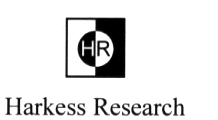
 Wisp
Unification Theory - General Relativity
Wisp
Unification Theory - General Relativity
- Home
- About Me
- Reasons why Einstein was wrong
- One-way speed of light experiments
- Hot topic
- Q&A
- General Relativity

- Book Contents
- Introduction
- 1 Matter,Space and Time
- 2 Symmetry
- 3 Fractals
- 4 Wisp Space
- 5 Gravity
- 6 Electromagnetic Force
- 7 Wisp & S.R: Fundamentals
- 8 Wisp & S.R: Electrodynamics
- 9 Wisp & S.R: Doppler effect
- 10 Wisp & S.R: Relativistic Mechanics
- 11 Big bang
- Appendix A
- Appendix B
- Index A-Z
- Copyright
- Feedback
General Relativity
Einstein's general relativity applies to frames of reference that are
accelerating with respect to inertial frames. It developed from his happiest
thought - the principle of equivalence: No experiment can distinguish
between a uniform gravitational field and an equivalent uniform acceleration.
Tests carried out to an accuracy greater than one part in a hundred million
million have shown that there is nothing to distinguish between an object's
gravitational and inertial mass, and wisp theory predicts that no experiment
on earth can separate the two.
Although the principle upon which it builds is very simple, the theory
becomes complex, because of the nature of Einstein's space–time.
It predicts that mass and energy are responsible for the curvature of
space–time, and gravitational effects are a consequence of this.
The gravitational ‘force’ in this sense is regarded as fictitious.
In this space–time, light and material bodies follow paths of shortest
distance between points – geodesic lines, and the rules of Euclidean
geometry breakdown – straight-line paths become curved, etc.

As it is practically impossible to visualise what three-dimensional space–time would look like, simplified models are used. Figure 5.1 shows a heavy mass (lead ball) curving two-dimensional space–time (rubber-sheet). This image helps us to understand the process that causes the gravitational effect. However, it only represents two-dimensional space–time which we view in three-dimensional space. This does not explain the true cause of gravity, as it is an abstract idea that arises from the space–time concept.
The first success of Einstein’s theory was demonstrated by the
correct prediction of a small anomaly in the precession of the perihelion
of the planet Mercury – that Newton’s formula failed to predict
– of 43 seconds of arc per century.
Further tests confirm general relativity. In 1919 Arthur Eddington carried
out tests during a total solar eclipse and showed that light gets deflected
as it passes close to the surface of the Sun.
Ether and General Relativity
It is a simple matter to explain general relativity in terms of the ether, and in doing so it is possible to show what causes of the effects that general relativity discovered. We do this by applying wisp principles directly to the formulas of general relativity.
What causes clocks run slow in a gravitational field?
In free space, wisps are in closer together and the binding force is at its greatest strength. And so, the forces that drive the inner workings of stationary clocks in free space are at full strength, and time runs at an absolute rate, unaffected by dilation effects. Closer to large material bodies, wisp space is rarefied because wisps are forced apart by curvature, and the "horizontal" spherical tension force is weakened. The forces that drive the inner workings of clocks in gravitational fields are weaker, and so they run slower. These effects would no be detected by local observers, as they too experience dilation effects, which would mask the changes. The only force that increases the closer it gets to the body is the gravitational force, which is caused by the radial compression force.
Continued development.
Home --
About Me -- Reasons
why Einstein was wrong -- One-way
speed of light experiments -- Hot
topic -- Q&A -- General
Relativity --
Book Contents -- Introduction
-- 1 Matter, Space and
Time -- 2
Symmetry -- 3
Fractals -- 4 Wisp Space
-- 5 Gravity -- 6
Electromagnetic Force --
7 Wisp & S.R: Fundamentals
-- 8 Wisp & S.R: Electrodynamics
-- 9 Wisp
& S.R: Doppler effect -- 10
Wisp & S.R: Relativistic Mechanics --
11 Big bang -- Appendix
A -- Appendix B -- Index
A-Z -- Copyright -- Feedback